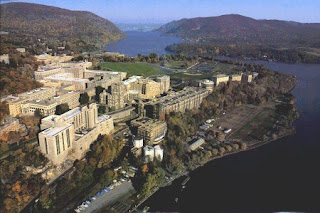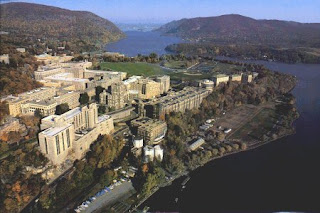FORENSIC -- Forensic Science
Forensic Science
Forensic Science or Criminalistics, must be understood as the set of all scientific knowledge and techniques that are used to solve crimes. In homicide cases, for example, are used means by which they discover, for example, the time, date and cause of death, what led to the murder, etc.
Experts from various specialties are professionals who perform forensic tests within police institutions, associated with the government, or independent consultants.
Forensic science has been popularized in North American's series like Dexter, CSI: Crime Scene Investigation, Bones, Body of Proof and NCIS.
Experts from various specialties are professionals who perform forensic tests within police institutions, associated with the government, or independent consultants.
Forensic science has been popularized in North American's series like Dexter, CSI: Crime Scene Investigation, Bones, Body of Proof and NCIS.
The Forensic Science itself is subdivided into multiple branches:
- Forensic Anthropology or Forensic Physical Anthropology
- Forensic Computing or Forensic Informatics
- Forensic Biology
- Forensic Geology
- Forensic Medicine
- Forensic Chemistry
- Forensic Mathematics
- Forensic Papiloscopy
- Forensic Ballistics
1. Forensic Anthropology or Forensic Physical Anthropology
The Forensic Anthropology's main object is identity and human identification and uses general knowledge of anthropology. Physical anthropology deals with the forensic identification of skeletonized human remains due to its great relationship with biology and osteology. It also examines, when possible, the causes of death, and reconstructing the scene depicting the death by the examination of bones and injuries, with the help of forensic scientists and criminalists. An example of a remarkable forensic anthropologist Kathy Reichs, an expert in forensic anthropology and author of mystery novels and it inspired the series Bones.
2. Forensic Computing or Forensic Informatics
The Forensic Computing is basically the use of scientific methods for preservation, collection, validation, identification, analysis, interpretation, documentation and presentation of digital evidence valid in court.
3. Forensic Biology
The Forensic Biology is divided into six parts: Forensic Biochemistry, Forensic Botany, Forensic Entomology, Forensic Genetics, Hematology and Forensic Histology. It has been used to prove that a suspect was at the crime scene, identify products of endangered animals, solve crimes evidence linking the suspects, etc..
Forensic Biochemical studies chemical processes occurring in the organism. Forensic Palynology or Forensic Botany uses plants, seeds or any traces botanists in order to obtain evidence to a crime, evidence and testimonies / or charges. Forensic Entomology is the application of the study of the biology of insects and other arthropods in criminal cases. Forensic Genetics or Forensic DNA is the area of knowledge that deals with the use of the knowledge and techniques of genetics and molecular biology in aid to justice. The most popular is the use in paternity test, but this is not limited to this, may also be used in the identification or individualization of animals, plants and microorganisms. Forensic Hematology studies the blood. Forensic Histology is the study of biological tissues of animals and plants, their formation, structure and function.
Forensic Biochemical studies chemical processes occurring in the organism. Forensic Palynology or Forensic Botany uses plants, seeds or any traces botanists in order to obtain evidence to a crime, evidence and testimonies / or charges. Forensic Entomology is the application of the study of the biology of insects and other arthropods in criminal cases. Forensic Genetics or Forensic DNA is the area of knowledge that deals with the use of the knowledge and techniques of genetics and molecular biology in aid to justice. The most popular is the use in paternity test, but this is not limited to this, may also be used in the identification or individualization of animals, plants and microorganisms. Forensic Hematology studies the blood. Forensic Histology is the study of biological tissues of animals and plants, their formation, structure and function.
4. Forensic Geology
The Forensic Geology studies evidence relating to minerals, oil and other earth materials, used to answer questions raised by the legal system.
5. Forensic Medicine
The Forensic Medicine is subdivided into Forensic Odontology, Forensic Psychiatry, Forensic Traumatology, Forensic Asphixia, Forensic Toxicology and Forensic Thanatology. This uses technical and scientific knowledge of medicine to clarify facts of interest.
The Forensic Odontology aims to research psychic phenomena, physical, chemical and biological processes that can reach or have reached the man, dead or alive, and even fragments or traces, resulting injury partial and total, reversible or irreversible. Forensic Psychiatry assesses capacity for acts of civil life and their capacity to be held criminally liable, basing on the mental state of the individual. The Forensic Traumatology studies the injuries resulting from traumatic physical or psychological. The Forensic Asphixia, as the name implies, assesses the suffocation of a general mode. The Forensic Toxicology has as its object of study the adverse effects of chemicals on living organisms. Forensic Thanatology deals with death and medical-related fields.
The Forensic Odontology aims to research psychic phenomena, physical, chemical and biological processes that can reach or have reached the man, dead or alive, and even fragments or traces, resulting injury partial and total, reversible or irreversible. Forensic Psychiatry assesses capacity for acts of civil life and their capacity to be held criminally liable, basing on the mental state of the individual. The Forensic Traumatology studies the injuries resulting from traumatic physical or psychological. The Forensic Asphixia, as the name implies, assesses the suffocation of a general mode. The Forensic Toxicology has as its object of study the adverse effects of chemicals on living organisms. Forensic Thanatology deals with death and medical-related fields.
6. Forensic Chemistry
The chemistry Forensics is the application of knowledge of chemistry and toxicology in the legal field or court. Several techniques of chemical analysis, biochemical and toxicological properties are used to help understand the complex and sophisticated face of crimes.
7. Forensic Mathematics
Forensic Mathematics is adapted and applied to issues encountered in the legal, drafting and interpretation of such processes and sentences.
8. Forensic Papiloscopy
The Forensic Papiloscopy deals with human identification through dermal papillae (fingerprints).
9. Foresic Ballistics
The Forensic Ballistics studies the motion of projectiles, especially firearms, their behavior inside and outside of these, as the trajectory, impact, marks, explosion, etc.. Using proper techniques and knowledge of physics and chemistry, as well as serving other sciences.
Vany Sampayo


Comentários
Enviar um comentário
Receive your comment is very important to me and, that so, be totally honest. Thank you.
Receber o vosso comentário é muito importante para mim e, por isso, sejam totalmente honestos. Obrigada.